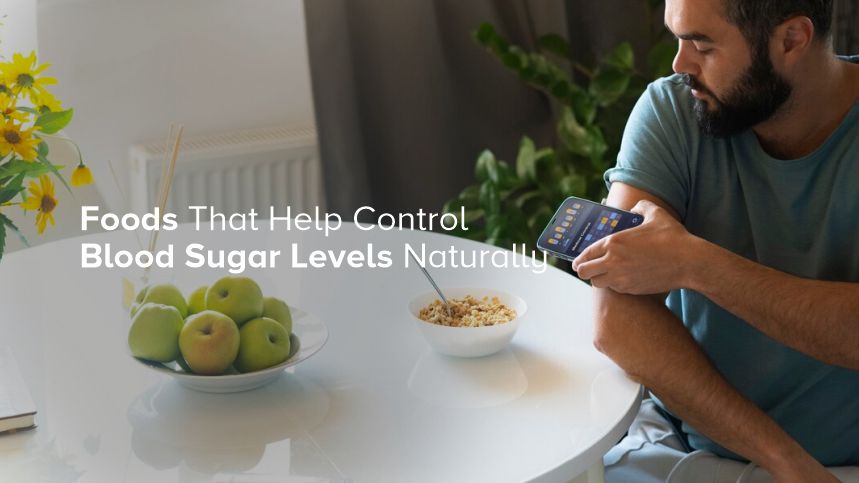


Condition
- Diabetes
- Preventive Health Checkup
- Top tests
- Heart Disease & Hypertension
- Allergy
- Anemia
- Arthritis
- Fever
- Kidney Disease
- Liver Disease
- PCOD
- Thyroid Disorder
- Vitamin Deficiency
- Infectious
- Endocrine Disorders
- Metabolic / Endocrine
- Blood Disorders
- Renal
- Neuro
- Metabolic Disorders
- Gastrointestinal
- Bleeding Disorder
- Genomics
- Pulmonary
- Others
- Oncology
- Gastrointestinal / Skeletomuscular
- Skeletomuscular
- Pulmonary / Metabolic
- Autoimmune
- Toxicity
- Genetics
- Antenatal Profile
- Dermatology / Autoimmune
- Bad Obstetric History
- Cardiovascular
- Autoimmune / Gastro
- Infectious / Oncology
- Blood Banking & Transfusion
- Genomics / Oncology
- Skeletomuscular / Renal
- Drug Monitoring
- Oncology/Infectious
- Oncology / Genomics
- Reproductive Genomics
- New Born Screening
- Skin/Infectious
- Renal / Diabetes
- Cardiovascular / Neuro
- Drugs of Abuse
- Prenatal Screening
- Profile
- Infectious/Derma
- Dermatology
- Gastrointestinal / Renal
- Autoimmune / Neuro
- Skeletomuscular / Autoimmune
- Skeletomuscular / Gastro
- Infectious / Autoimmune
- Renal / Oncology
- Skeletomuscular / Oncology
- Oncology / Skeletomuscular
- Pulmonary / Infectious
- Oncology / Gastrointestinal
- Ocular / Inherited
- Neuroendocrine / Oncology
- Autoimmune / Hemat
- Oncology/Neuro
- Autoimmune / Skeletomuscular
- Reproductive disorders
- Hormonal Disorders
- Infectious / Renal

Tests
- Am-Fit Healthy Womens Check - 2
- Am-Fit Healthy Womens Check - 1
- Am-Fit Shubh Health
- Am-Fit Freedom (1+1)
- Am-Fit Senior Citizen - Male
- Am-Fit Senior Citizen - Female
- Am-Fit Plus (With Vitamin D & B12)
- Am-Fit (With Vitamin D)
- Basic Health Check
- Comprehensive Health Check
- Executive Health Check
- Advance Health Check
- Senior Citizens - Male Check
- Senior Citizens - Female Check
- Am-Fit Freedom Plus (1+1)
- Am-Fit Freedom Plus
- Kids Check
Managing blood sugar levels is essential, not just for individuals diagnosed with diabetes or pre-diabetes, but for anyone looking to maintain overall health. High blood sugar levels can lead to serious health issues over time, including heart disease, kidney problems, and even nerve damage. Thankfully, making smart choices about what we eat is one of the most effective and natural ways to regulate blood sugar.
Lets explore specific foods that help control blood sugar levels, explain how they work, and offer tips for incorporating them into your daily meals. Whether you're looking to prevent future issues or manage your existing glucose levels more effectively, these foods could make a significant difference.
Understanding Blood Sugar and What Affects It
Blood sugar, or glucose, is the main source of energy for your body. It comes primarily from the food you eat, especially carbohydrates. The pancreas produces a hormone called insulin, which helps transfer glucose from your blood into your cells to be used for energy.
When blood sugar is consistently elevated or poorly regulated, it can lead to health complications. Factors like poor diet, a lack of exercise, stress, and even genetics can all affect blood sugar levels. Diet, however, plays one of the most significant roles.
The key to blood sugar management is to choose foods that provide steady energy and help moderate the rise and fall of glucose levels in the bloodstream.
The Best Foods to Naturally Control Blood Sugar Levels
1. Leafy Greens
Leafy greens such as spinach, kale, and Swiss chard are nutrient powerhouses loaded with fiber, magnesium, and antioxidants. These nutrients help regulate blood sugar by slowing down the absorption of carbohydrates.|
Tip: Add a handful of greens to your morning smoothie or pair them with a lean protein for dinner.
2. Whole Grains
Unlike refined grains, whole grains like brown rice, quinoa, oats, and barley have their fiber and nutrients intact. The fiber content slows digestion, preventing blood sugar spikes.
Example: Start your day with steel-cut oatmeal and top it with a few berries for added sweetness without spiking your blood sugar.
3. Berries
Speaking of berries, fruits like strawberries, blueberries, raspberries, and blackberries pack a punch of flavor while being low on the glycemic index (GI). Their high antioxidant content also helps reduce inflammation, which can lead to insulin resistance.
Tip: Enjoy a handful of mixed berries as a snack or dessert.
4. Legumes
Beans, lentils, and chickpeas are rich in protein, complex carbohydrates, and soluble fiber, which work together to stabilize blood sugar levels.
Quick Meal Idea: Make a hearty soup or salad with lentils, black beans, or chickpeas for a filling and blood sugar-friendly meal.
5. Nuts and Seeds
Almonds, walnuts, chia seeds, and flaxseeds are full of healthy fats, protein, and fiber, which help maintain steady glucose levels. They also reduce cravings, making it easier to avoid sugary snacks.
Snack Tip: Keep a small bag of mixed nuts and seeds handy for an on-the-go option.
6. Fatty Fish
Salmon, mackerel, and sardines are excellent sources of omega-3 fatty acids. While they don't directly lower blood sugar levels, they combat inflammation and promote better heart health—a vital consideration for people managing blood sugar.
Serving Suggestion: Grill or bake salmon and pair it with steamed vegetables and a whole grain.
7. Cinnamon
This flavorful spice has been shown to improve insulin sensitivity and help reduce fasting blood sugar levels in some studies.
How to Use It: Sprinkle cinnamon on oatmeal, yogurt, or even coffee for a healthful boost.
8. Avocado
This nutrient-rich fruit is known for its healthy monounsaturated fats, fiber, and low carbohydrate content. These components help slow digestion and moderate blood sugar.
Try This: Add sliced avocado to salads, sandwiches, or even as a topping for whole-grain toast.
9. Greek Yogurt
Unsweetened Greek yogurt is high in protein and probiotics, which can help regulate blood sugar levels and improve gut health.
Pro Tip: Opt for plain, unsweetened varieties and add your own natural flavorings like a drizzle of honey or a sprinkle of nuts.
10. Apple Cider Vinegar
While technically not a food, apple cider vinegar has been shown to improve insulin sensitivity and lower blood sugar levels, especially after meals.
How to Use: Dilute one to two tablespoons of apple cider vinegar in water and drink it before meals to aid blood sugar control.
How to Include These Foods in Your Diet
You don't need to overhaul your diet overnight. Start by incorporating one or two of these foods at a time into your meals and snacks. For example:
- Replace refined grains with whole grains during lunch and dinner.
- Swap out processed snacks for a handful of nuts or berries.
- Add leafy greens and avocado to your sandwiches or omelets.
Pair these changes with portion control and balanced meals that include protein, healthy fats, and low-GI carbs.
Additional Tips for Regulating Blood Sugar
While food is a major factor, managing blood sugar involves several lifestyle components:
- Stay Active: Regular exercise helps your muscles use glucose for energy, reducing blood sugar levels.
- Manage Stress: Elevated stress levels can spike blood sugar. Incorporate mindfulness, yoga, or other relaxation techniques into your routine.
- Stay Hydrated: Drinking enough water helps your kidneys eliminate excess sugar through urine.
- Sleep Well: Poor sleep can affect insulin sensitivity and blood sugar levels over time.
- Monitor Levels: If you have diabetes or pre-diabetes, regularly check your blood sugar levels to see how your body responds to different foods and activities.
Conclusion
Managing blood sugar levels doesn’t have to be complicated or restrictive. By focusing on nutrient-dense, whole foods like leafy greens, whole grains, berries, and healthy fats, you can naturally support your body’s glucose regulation. These small, consistent changes can lead to big improvements in your overall health.
If you're ready to take control of your blood sugar through your diet, start today with one small addition—whether it's a handful of spinach in your smoothie, a sprinkling of cinnamon, or swapping out white bread for quinoa. Your body will thank you.
WANT TO BOOK HEALTH CHECKUP ?
Categories
Diabetes
44
Preventive Health Checkup
53
Genomics
1
Others
81
Pulmonary / Infectious
1
Top tests
101
Genetics
1
Gastrointestinal / Skeletomuscular
2
Blood Banking & Transfusion
16
Lifestyle Packages
35
Vitamin Deficiency
12
Heart Disease & Hypertension
37
Allergy
9
Blood Disorders
3
Fever
4
Profile
1
Kidney Disease
8
Thyroid Disorder
5
Liver Disease
6
Anemia
5
Arthritis
4
Infertility
6
PCOD
3
Bone Health
1
Cancer
1
Fatty Liver
1
Recent Blogs
What is Absolute Eosinophil Count (AEC)?
What is Absolute Eosinophil Count (AEC)? A blood test can reveal a great deal...
05-12-2025
ESR Levels: High vs. Low – What They Mean for Your Health
ESR Levels: High vs. Low – What They Mean for Your Health The Erythrocyte...
05-12-2025
How to Choose the Right Blood Test Centre?
How to Choose the Right Blood Test Centre? Choosing the right blood test centre...
05-12-2025





-and-Why-It-Matters.jpg)

